
Aaron Foyer
Vice President, Research and Analytics
The importance of the big gray box in your cold, dark utility room

Vice President, Research and Analytics
Here’s a question to all our readers: do you know the size of your home’s electric panel? Specifically, how many amps your panel is designed to handle?
If you don’t, no need to feel bad: one-third of Americans can’t even find their home’s main breaker, at least according to a survey conducted by Electric Power Research. Bob Vila would not be proud.
Why are we asking? For how much money and effort is put toward reducing emissions from the electricity supply and upgrading the grid, there is almost no talk about the last few feet of that delivery. The millions of individual end-user connections from the grid: the home electrical panel.
Given how many US homes were built and wired prior to the popularity of electric vehicles and heat pumps, can today’s wires even handle our grand electrification plans?
To start with, residential buildings are going to play a big role in the transition. Their importance is underappreciated. Not only will many of today’s residential emissions be eliminated, but homes will also help in decarbonizing other sectors.
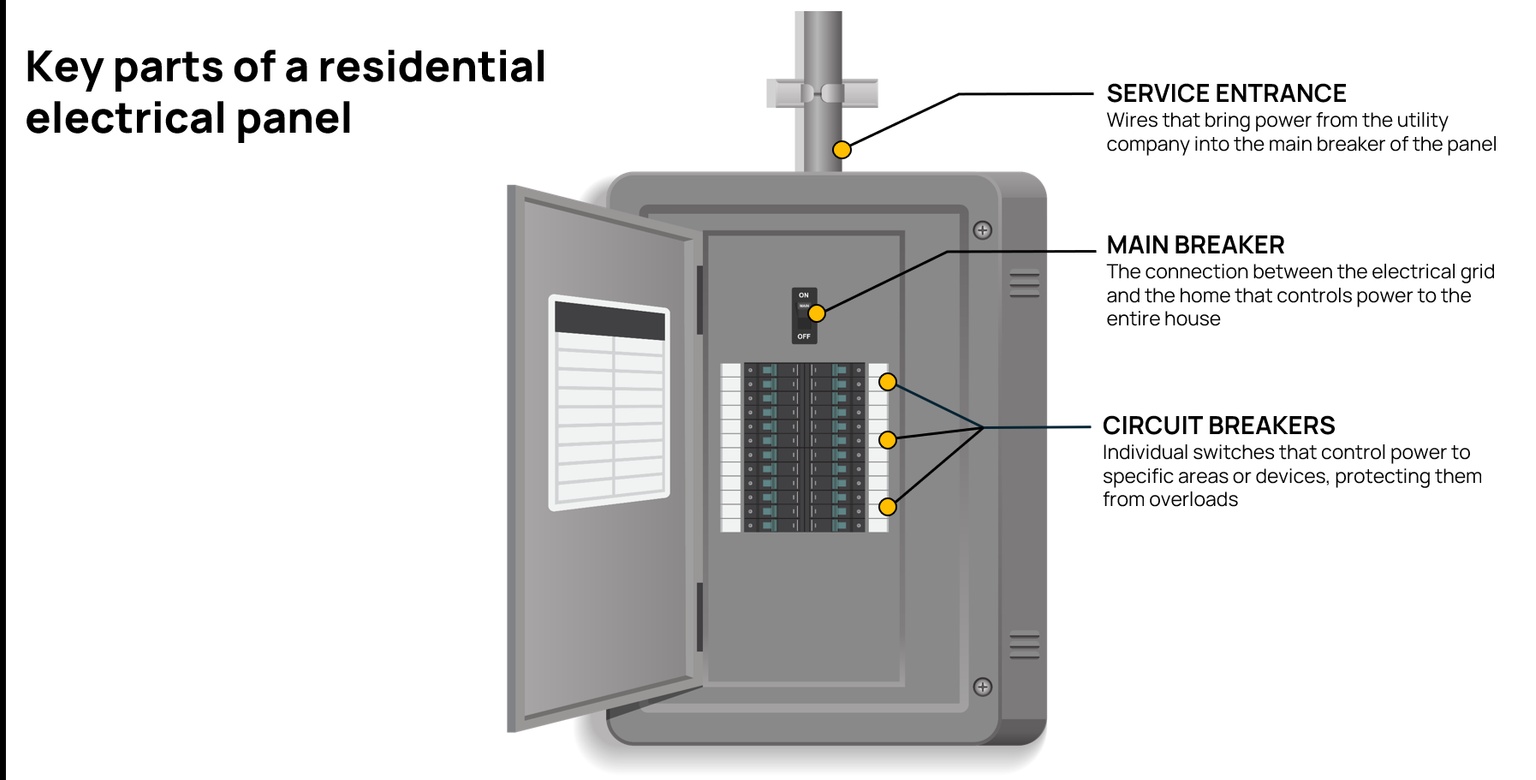
Network connection: The point where the grid connects to a house is the electrical panel. From the panel, various wires splinter off through circuit breakers to power devices around the home. You can think of an electrical panel as a railway switchyard, diverting from a central station (the grid) to a series of smaller individual tracks (home appliances).
The most determinant measure of an electrical panel is its amperage, which limits how much current can flow from the grid into a home. If, at any time, the combined power needs from all home appliances exceed what the panel is designed to handle, the panel will automatically break its connection to the grid. This stops the flow of electricity to protect electrical systems from damage and is known as the breaker tripping.
The residential sector was responsible for 15% of US emissions in 2022. Of those, two-thirds came from electricity used for things like lighting, heating and appliances. The other third came from the burning of fuels, primarily for heating and mostly natural gas. By swapping out gas and heating oil furnaces for things like heat pumps, some share of that combustion heating will do its best Bob Dylan and go electric. Home power use will also go up if efforts to ban gas stoves move ahead, forcing a shift to things like electric ranges.
And then there’s the less obvious impact of dwellings: They’re the gas stations of the 21st century. According to the Department of Energy, 80% of electric vehicle charging today takes place at home. And while that share may change as EV adoption demographics evolve and charging infrastructure gets built out, it nonetheless highlights how important those home-EV connections are. In 2022, light-duty and passenger vehicles accounted for 16% of US greenhouse gas emissions and it will be electricity drawn from the home that will address many of those.
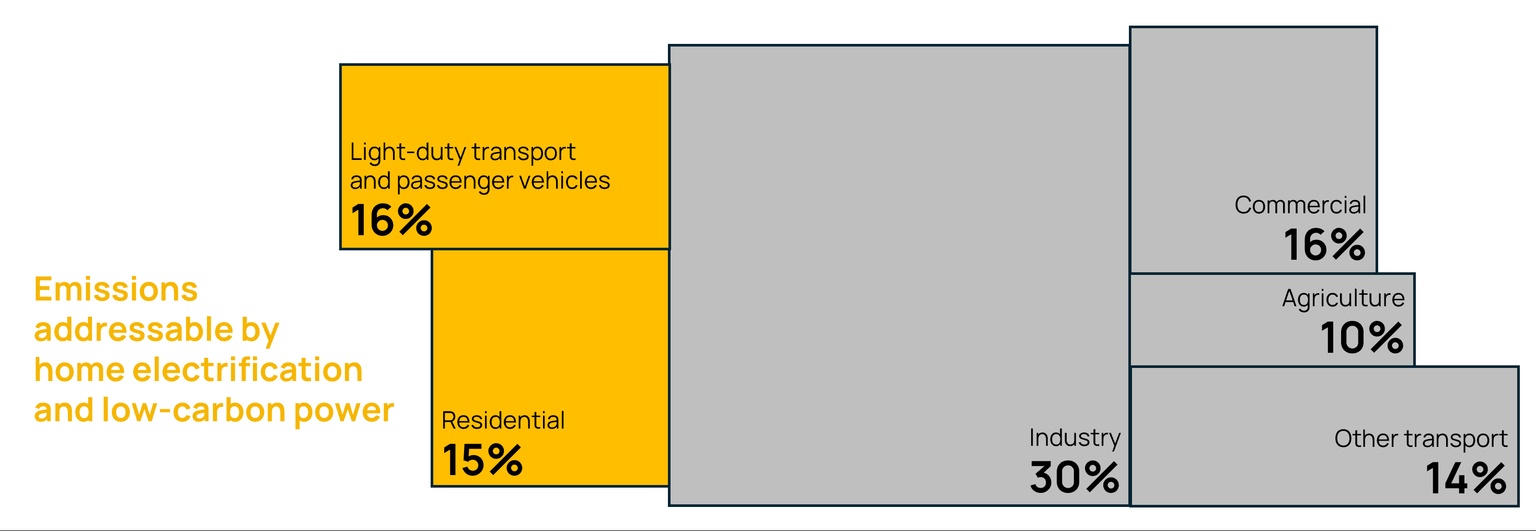
Note: Emissions from the electricity sector are distributed across the other sectors; territories not included
Source: Orennia, US Environmental Protection Agency
Why it’s important: Over the decades, homes have come to demand more and more electricity. By adding new appliances, increasing dwelling size and electrifying more, the demand for power and amperage has increased. And yet many panels haven’t kept pace.
In the 1950s and 1960s, most homes were built with 60-amp service. Following the wider adoption of televisions, refrigerators and other electronics in the ’70s, the 100-amp panel became more popular with builders. Today, to be fully electrified and handle things like EVs and electric heating, the average US home will need a 200-amp connection. Most electrical codes require panels to have a 20% margin of safety, meaning the panel’s breaker will trip when home power demand hits 160 amps.
Data about panel sizes is surprisingly difficult to come by. The best public survey was published by Utility Forum last year and found ~40% of homes in the US have a 200-amp panel or higher. More concerningly, ~60% have panels designed for 150 amps or less, which simply won’t suffice for full electrification.
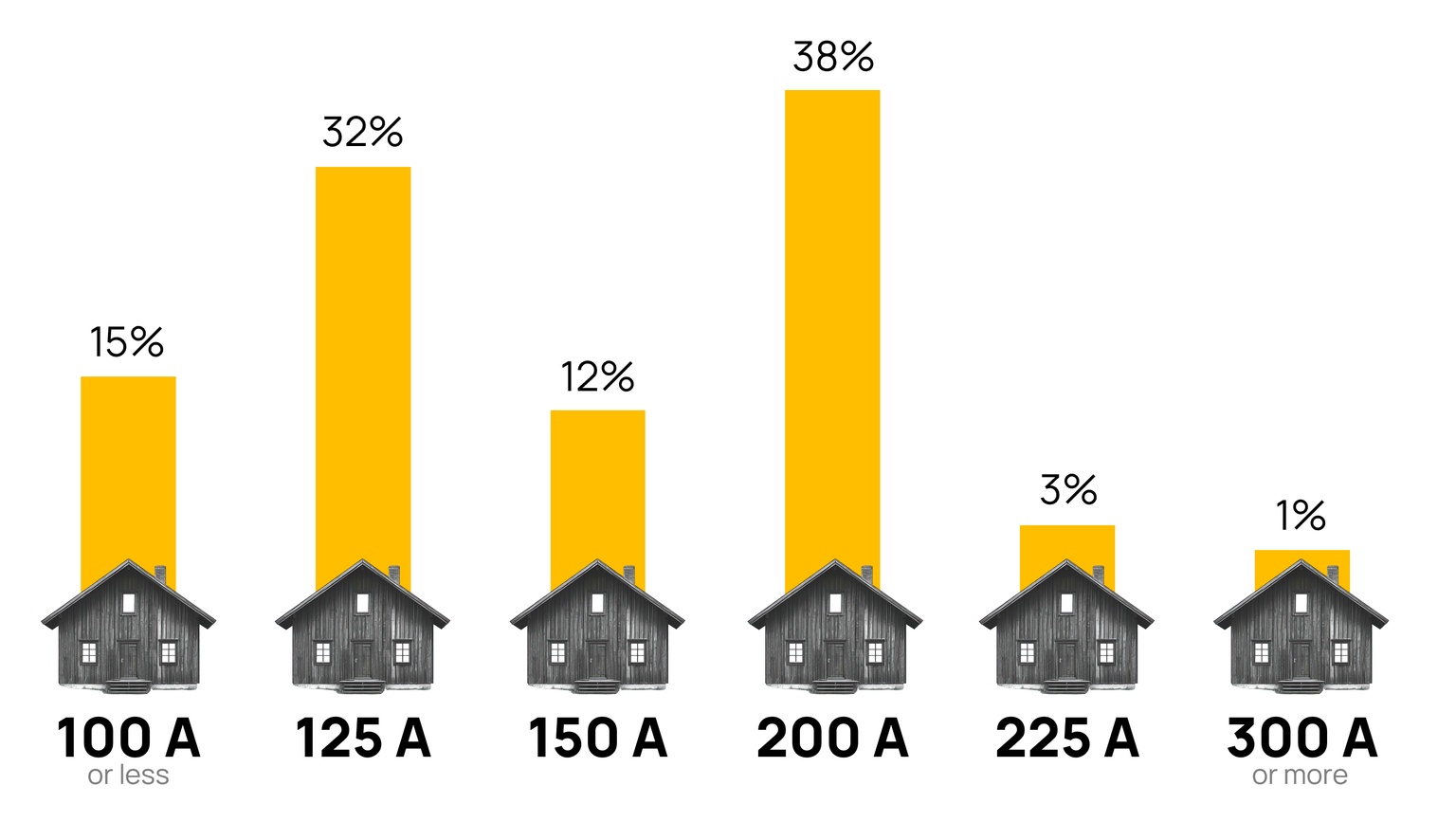
Source: Orennia, Utility Form
Electric vehicles alone represent a challenge for homes. While some residents will make do with a single Level 1 charger which uses just 12 amps, most require the more powerful Level 2 charger that can fully recharge an EV overnight. Level 2 chargers often draw 32 amps but can go all the way up to 80 amps. And that’s for a single EV. It’s estimated that nearly 60% of American households own two or more cars, a share that’s increasing over time.
That’s a lot of Level 2 chargers for a home.
And then heat pumps: These clever siblings of the air conditioner usually use very little electricity to either warm up or cool down a dwelling. Usually. The moment temperatures start to reach extremes, when heating or cooling units are needed most, the efficiency of heat pumps drop. A heat pump used to keep an average-sized home warm in the depths of a –30°F polar vortex can easily exceed 150 amps. To emphasize, that’s a single home appliance running just shy of the 160-amp safety limit of most 200-amp electrical panels.
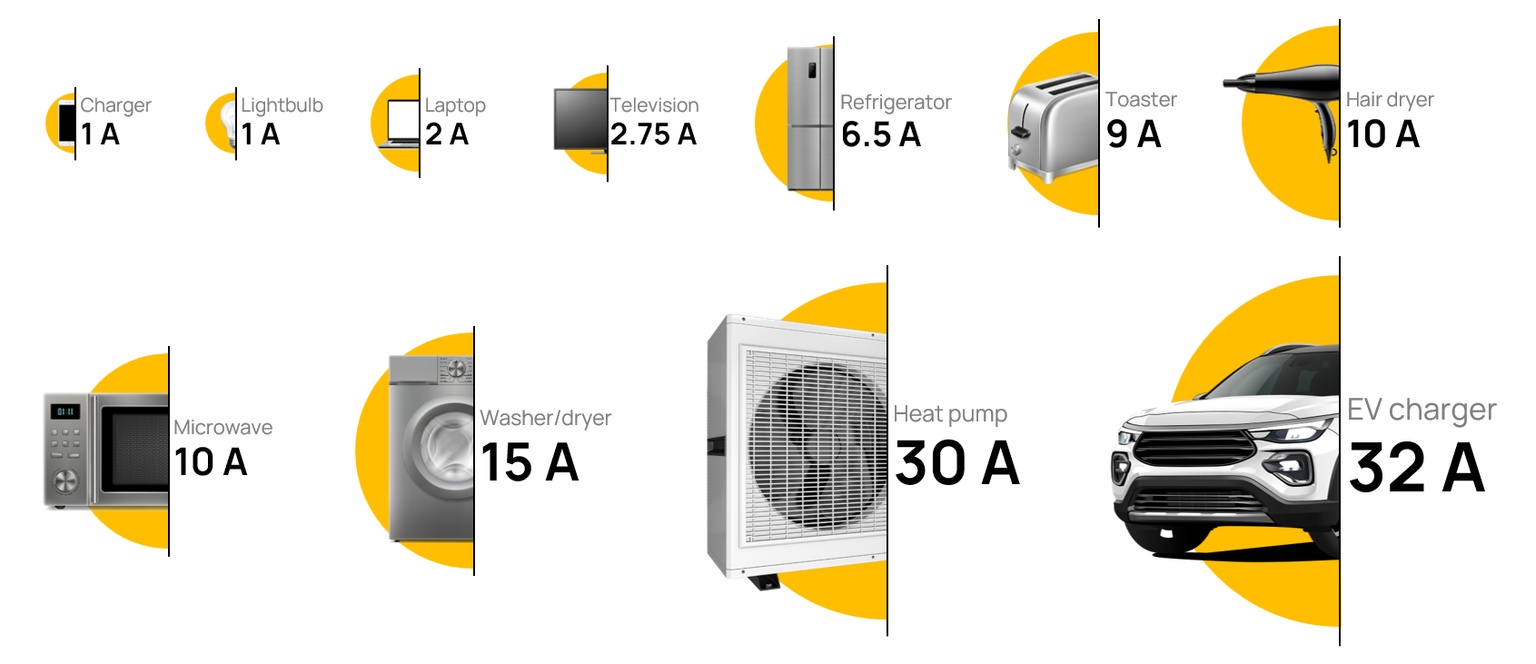
Note: Several values are the midpoint of ranges; some appliances, including heat pumps and electric vehicle chargers, can vary significantly in their amperage depending on size and use
Source: Orennia, Lilac Resort
Pair heat pumps with increased adoption of electric vehicles and other clean technologies into the home and you can understand why the size of home grid connections is so important.
As the late, great investor Charlie Munger once said, “We have a passion for keeping things simple.” The solution for small grid connections is a simple one: add bigger connections.
Your average electrical panel upgrade will cost between $2,000 and $3,000 per household. A study by Pecan Street estimates 48 million homes in the US will be required to modernize their electrical panel to be able to handle full electrification. That’s one-third of US homes. Even at $2,000 per upgrade, that’s almost $100 billion of residential spending needed just for homes to handle American electrification. And that’s not including other electrical upgrade costs that might be needed.
To be able to distribute enough power to homes, residential transformers (the metal garbage can-looking things on the electrical pole in your alley) need to be large enough. Home Guide estimates the cost for new residential transformers to be between $3,000 and $20,000 or more installed. While utilities often cover these costs, they still recoup their costs through higher power costs. And if the line between the transformer and electrical panel is too small, that’s another ~$5,000 upgrade. Electrification costs add up.
Other solutions exist: In most homes, there are key moments in the day when several appliances are all running at the same time. Think arriving at home, plugging in the Tesla, firing up the oven and turning up the thermostat, all within 15 minutes. Home circuit breakers often trip right around dinner time for this reason. Smart panels and smart devices can be designed to spread electricity use across time, like delaying EV charging until other appliances are off. Or even to use EVs to power appliances.
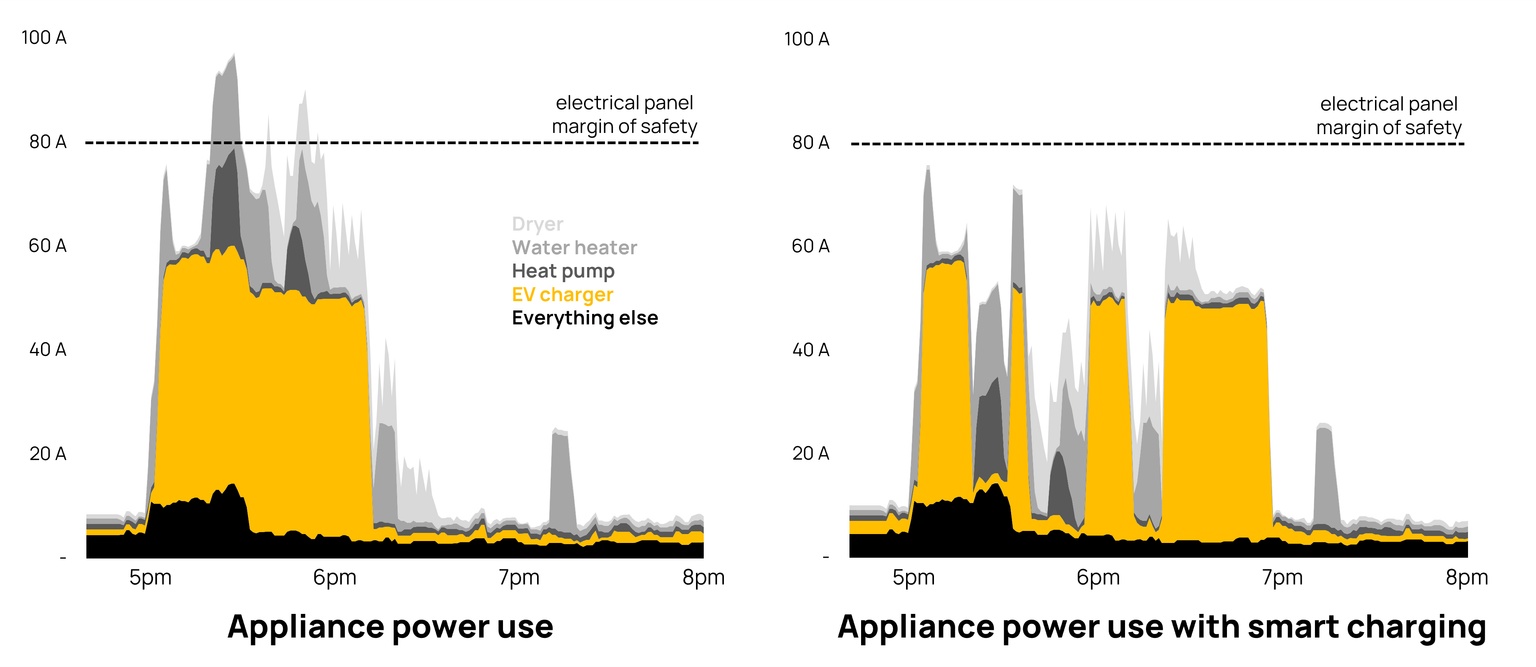
Source: Orennia, SPAN.io
At more of a bird’s eye view, companies are increasingly linking homes together to form an electrical web of supply and demand points that can be centrally controlled. These are known as virtual power plants (VPP) and may also help better manage home electricity demand at a community level.
In terms of how exciting different decarbonization technologies are, electrical panels are basically Ned Flanders. But being boring doesn’t mean unimportant.
Nearly a third of US emissions today could be addressed by electrifying the home with clean power. In many cases, the bottleneck for individuals will be the size of electrical panel hiding in that cold dark utility room.
Data-driven insights delivered to your inbox.